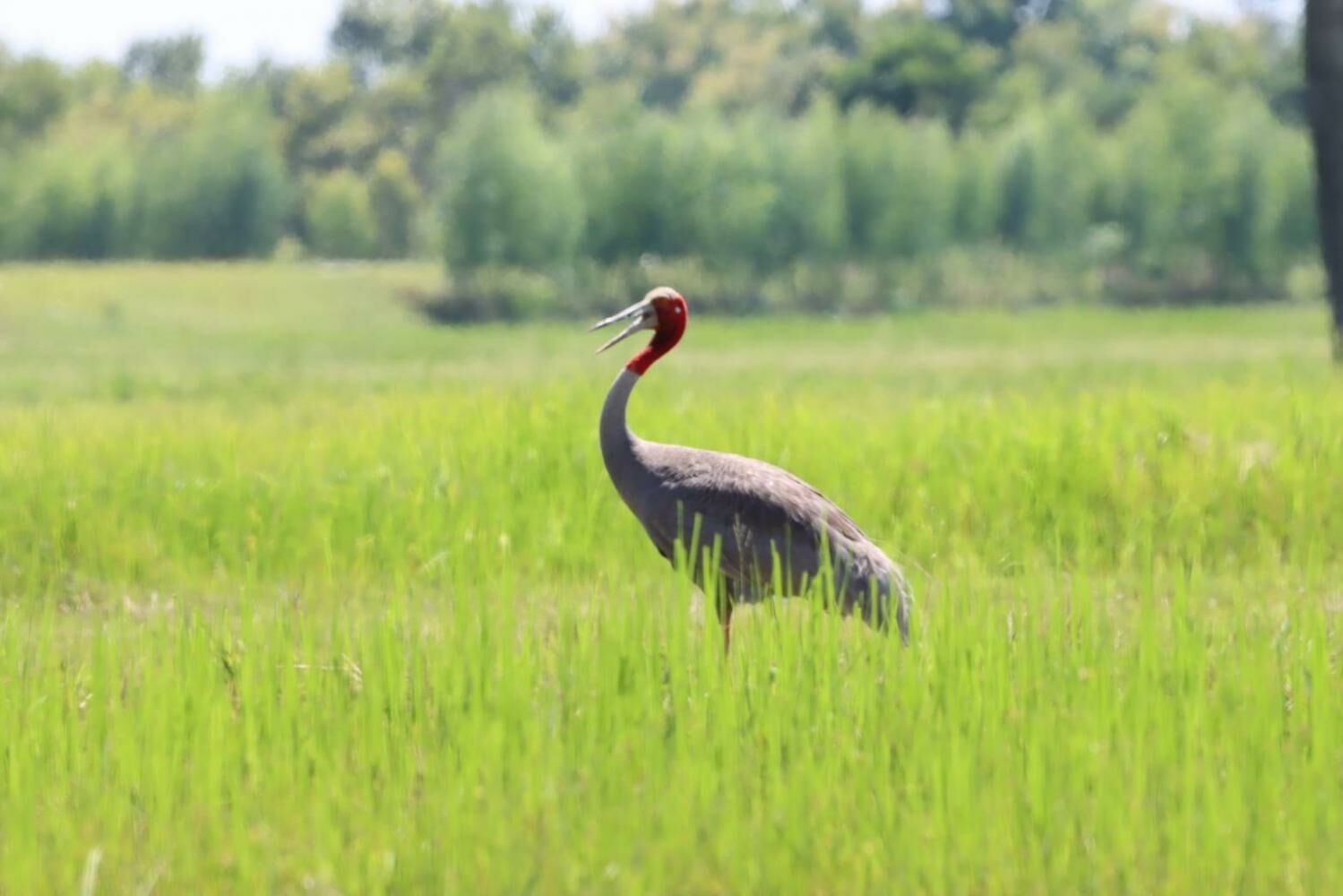Nearly extinct Eastern Sarus Crane eggs discovered in rice field

In a significant win for wildlife conservation, eggs of the Eastern Sarus Crane – also known as Thai Cranes – were found in a rice field adjacent to the Huai Talat Reservoir Non-Hunting Area in the Mueang district of Buriram, according to the Department of National Parks, Wildlife and Plant Conservation (DNP). The cranes were believed to be mostly extinct in the wild 50 years ago, but efforts in recent years hoped to regrow the population in nature.
Photos along with a narrative about the discovery of the two eggs were shared by the department on Friday. The account reveals that the farmer who owns the land stumbled upon the rare Saurs Crane eggs and promptly informed the wildlife officials. These officials then documented the site and sought assistance from the local community in preserving the tranquillity of the bird’s breeding ground.
The Wildlife Conservation Office’s Director within the DNP, Phadet Laithong, expressed his delight over this finding, crediting it in part to the department’s wildlife programme.
Eastern Sarus Cranes, which are usually referred to as Thai cranes, are identifiable by their grey feathers, lengthy legs and neck, and pointed beak, explained Phadet. The section above their neck and below their head is coloured red, while the top of their head is bereft of any feathers. Their eyes are dark orange and round.
These avians were last sighted in the wild approximately five decades ago and were assumed to be on the brink of extinction in Thailand.
The DNP and the Zoological Park Organization hoped to reverse this when they released cranes back into their natural environment, reported Bangkok Post. In 2011, wildlife officials reintroduced ten Sarus cranes into the Huai Chorakhe Mak Non-Hunting Area.
Phadet views the nest’s discovery as a potent symbol of the project’s success in boosting the population of Sarus Cranes in their native habitat.
“Though the numbers of these birds remain small, their prospects of survival are promising provided there is robust involvement from all stakeholders, including communities around non-hunting locales.”
One roundabout goal that aids the Sarus Crane conservation project involves advocating for organic rice farming. This helps diminish the threat posed by toxic chemicals in rice fields to these birds. Grown in the Sarus Crane’s natural environment, the jasmine rice is packed and retailed under the tag Sarus Rice.
The Zoological Park Organization corroborates that since 2011, approximately 156 Sarus Cranes have been set free across the wetlands in Buriram. As of today, around 120 Sarus Cranes are believed to be living in nature. It anticipates that these numbers are poised to rise. The 1992 Wildlife Protection Act recognises Sarus Cranes among the list of 15 species in danger.
Latest Thailand News
Follow The Thaiger on Google News:


























